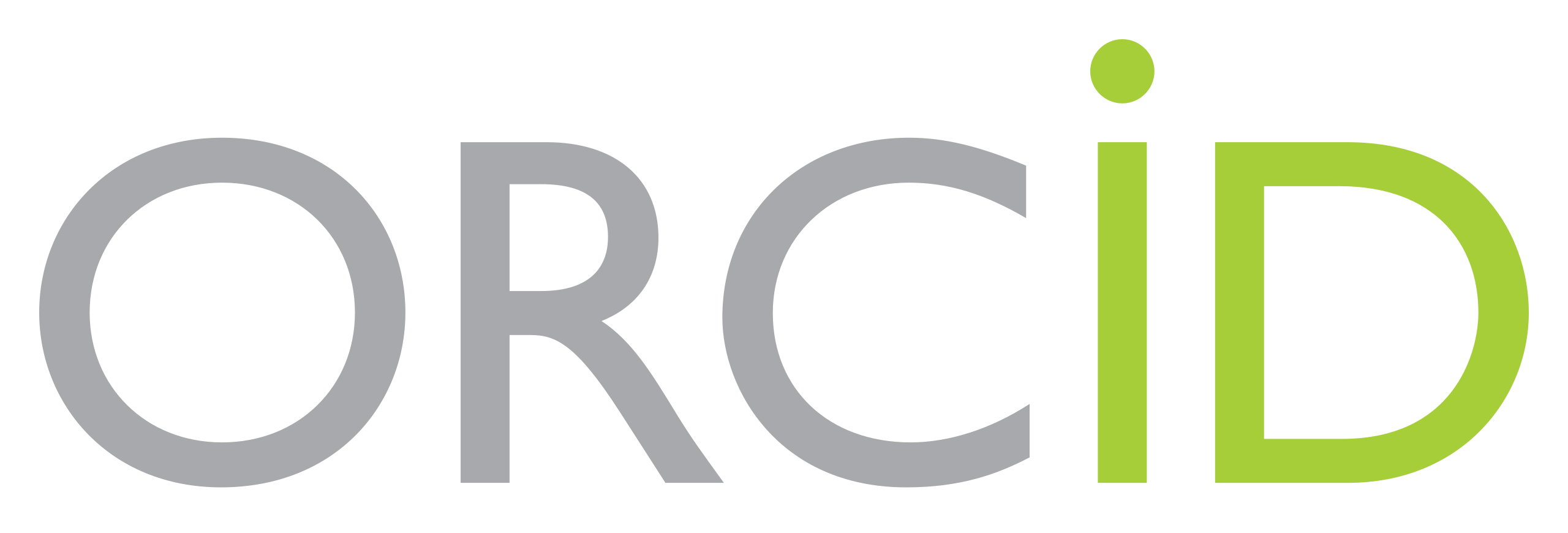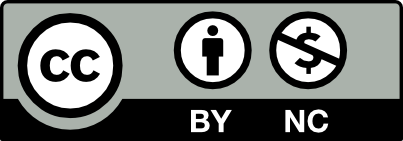About the Journal
Journal Information and Guidelines |
1. About Journal |
The Journal of Solar Energy and Sustainable Development (JSESD) is a peer-reviewed, open access, biannual, scientific journal. It aims to propagate state-of-the art and eminence research in the journal themes. It provides a bridge between research and implementation of renewable energy technologies. Its content is available to academics and researchers to support exchange of knowledge on the national and global levels. The journal publishes original research articles of best quality in solar energy and sustainable development, review articles, and Case studies.
Special subject issues may be published within regular issues and they experience the same reviewing scheme (peer review process).
The JSESD provides renewable energy issues and promotion of renewable energy-based engineering knowledge and advancement. Priority is given to the development of technical solutions regarding issues of energy sustainability and water desalination that would lead to the development of energy systems and help solve water shortage in the region. Discussion of economic and environmental issues of energy systems are highly and well encouraged. The journal welcomes research articles that deals with: modeling, simulation, optimization, analysis and experimental work with appropriate findings. It encourages all research work that will support UN’s sustainable development goals, especially goal number 7 related to clean and affordable energy (SDG7).
2. Benefits to Author: |
- Reliable, easy, transparent and rapid publication process.
- All submissions will be checked by iThenticate plagiarism prevention software before being sent to reviewers.
- Open access journal data bases for high visibility and promotion of the article.
- DOI for each published paper.
- NO paper processing charges $0 APC;
- Proofreading and editing of accepted papers are free of charge.
3. Audience: |
Mechanical, electrical, environmental, building, scientists, researchers, policy and decision makers, consultants in energy systems, environment, renewable energy and energy efficiency including; solar, wind, biomass, etc., energy system modelling and optimization, sustainable energy systems, greenhouse gases mitigation and other environmental pollution reduction.
4. Journal Topics: |
Areas and topics covered by SESD include but are not limited to following broad fields:
- Solar energy basic and advanced issues.
- Solar energy strategies and programs.
- Solar energy related polices
- Solar energy environmental issues and associated social impacts.
- Solar energy economics issues.
- Solar energy resource assessment.
- Solar energy storage techniques.
- Solar energy systems; modeling and simulation.
- Green hydrogen production, storage, transportation and use.
- Solar energy systems in buildings.
- Designing and sizing of solar energy systems.
- Low-energy building architecture associated with solar use.
- Standards of solar energy systems.
- Testing and evaluation of solar energy systems.
- Energy conservation and energy efficiency.
- Energy management.
- Water desalination based on solar energy.
- Fuel cell technologies and application.
- Nano based technologies for solar energy applications.
- Life Cycle Analysis of Energy Systems.
- Green building technologies.
- Energy efficient buildings.
The term "solar energy" in this context includes all types of renewable energies such as wind energy, geothermal, tidal, biomass, etc.
JSESD welcomes papers on other related topics as long as they are within the context of the wide scope of the journal.
5. Abstracting and indexing: |
 |
 |
 |
 |
 |
 |
 |
 |
6. Guide for author: |
- Introduction:
All articles should be original research papers presented with high quality research work and novel scientific findings. The article should be submitted in as word documents and PDF files.
- Types of Manuscripts:
Submitted articles should be of significant interest to the research and scientific community.
Original Research articles:
Articles should include original, high quality research work carried by authors that would have potential impact on one of the journal’s themes with new findings on related topics. The article should not have been published previously at any other journal.
Review Articles:
It should not be a literature survey. It should include a deep review and analysis in topics related to JSESD themes with insight about recent research and where it is heading in the future. It should integrate all relevant information on the proposed topic and all published articles and expected future research related to the topic in order to attract researchers and scientific community.
Review papers are restricted to invited authors on specific issues and research topics. It is recommended to send a proposal to the editorial board prior to writing the review article for evaluation of its suitability to the journal publication. In case it is accepted the author can proceed in writing the review paper.
- Check list before article submission:
The following items should be checked before article submission:
- A cover letter explaining the significance of research work and confirming that it is an original work and it is not considered for publication elsewhere.
- All names of the authors are included in the manuscript
- Corresponding author contact address, e- mail, and ORCID no. are provided
- Manuscript has an abstract followed by keywords
- Tables and figures are titled and in the right place and cited correctly in the text.
- Manuscript has been checked for spelling and grammar mistakes.
- All references are written properly and cited in the text.
- If any photos or other material has been taken from any sources, permission should be taken from these sources.
- Submission declaration: Authors should declare that the manuscript has not been previously published in conference or journal or under consideration for publication elsewhere and if accepted it is not intended to be republished elsewhere in any form or language. All authors should approve the publication of the manuscript and get approval from the organization where the work was performed.
- Competing of interest: Authors should disclose any potential conflict of interest in a statement at end of the manuscript.
- Fund resource: Authors should acknowledge funding sources, if any, in a statement at end of the manuscript.
- AI Declaration: Authors should declare the use of Generative AI and AI-assisted technologies in the writing process of their manuscript.
- Authors contributions: Authors should specify the role of each author in the research and manuscript preparation in a statement according to CRediT (https://groups.niso.org/higherlogic/ws/public/download/31067/CRediT_Taxonomy_Terms_and_Definitions_list). Contributor roles should be provided at the end of the manuscript.
- Manuscript Preparation:
4.1. Formatting requirements:
The manuscript must be written in a clear and concise English or Arabic language. It should be written in a standard font (Times New Roman, 12-point) and double spacing. It should not exceed 8000 words. The manuscript must contain the essential elements such as; Abstract, Keywords, Introduction, Materials and Methods, Results, Conclusions, Figures and Tables. If the article includes any Supplementary material, it should be included in the initial submission for peer review purposes. The article should be divided into sections.
4.2. Article structure Sections and subsections:
The article should be divided into sections and subsections with clearly defined numbers; e.g. 1.1, then 1.1.1, 1.1.2, .. , 1.2, …etc.
4.2.1. Title: It should be short, Concise and descriptive. Author/s should avoid abbreviations as much as possible.
4.2.2. Author names and affiliations:
Author/s should indicate the given name(s) and family name(s) of each author and check that all names are spelled correctly. The authors' affiliation addresses should be presented below the names. Full postal address of each affiliation, including the country name, e-mail address and ORCID no. of each author.
4.2.3. Corresponding author:
The corresponding author, who will handle correspondence at all stages of refereeing, publication and post-publication, should be indicated clearly. He will be responsible for answering any inquiries related to the manuscript such as: Methodology and Materials. His e-mail address should be given and updated.
4.2.4. Abstract:
It should provide a brief summary of 350 words of the research work’s objectives, scientific contribution, methods, results and conclusions
4.2.5. Keywords:
4-6 keywords should be provided for indexing.
4.2.6. Introduction
It should include the work objective, background, previous work, short literature survey and work contribution.
4.2.7. Material and methods
Work methodology should be described in a way to allow work to be reproduced by other researchers.
4.2.8. Results
Work results should be described clearly and discussed concisely indicating the significance of the work.
4.2.9. Conclusions:
It should describe the meaning of the results, especially in the framework of the subject. It should include general and specific conclusions but not the summary of the article.
4.2.10. Acknowledgements: Acknowledgement statement to recognize the contributions from funding sources and non-authors.
4.2.11. Authorship statement
Authors should have substantial contribution to the research work or research article. The contribution can be classified as study conception and design, data acquisition, analysis and interpretation. Writing first draft, revision, approval of final version and agreement for all aspects of the work related to its accuracy or integrity. To present author contributions, CRediT statement should be presented prior to acknowledgement. It offers authors chance to give accurate details about their contribution to the published work. It contains: conceptualization, methodology, software, validation, investigation, resources, writing original draft, review and editing, supervision, funding. Authorship statements should be formatted with the names of authors first followed by CRediT (https://groups.niso.org/higherlogic/ws/public/download/31067/CRediT_Taxonomy_Terms_and_Definitions_list) contributor role(s).
4.2.12. Changes of authorship:
Authors are expected to agree on the order of listing their names before the submission of the manuscript. It is not accepted to do any changes such as: addition, deletion or rearrangement of authors’ manes after acceptance of the manuscript for publication by the Journal Editors.
4.2.13. Conflicts of Interest:
The authors should state any conflict of interest. If they don’t have any conflict of interest, they should write that they have no relevant financial or nonfinancial interest to disclose.
4.2.14. Data Availability Statement:
Authors are encouraged to include their data during submission to be available to other readers and researchers as a 'Data Availability' section in their manuscript, and the authors may refer to data hosted in ANY repository. It should be placed before the references statement example: All data are available in the manuscript.
4.2.15. Funding source:
Authors are requested to identify the funding sources for any financial support to conduct the research work that resulted in the article preparation, specifying its role in any stage of the project: providing data, project design, analyzing and interpretation of data, writing the article and decision to submit the article for publication. If there are no funding sources, it should be stated. This research received no external funding.
4.2.16. AI- Declaration:
Authors are allowed to use Generative AI and Ai tools in scientific writing of their manuscript to improve readability and language quality. If AI technology and tools are used in preparing the manuscript, authors should review and edit the manuscript before submission as the authors have the responsibility of the content of the manuscript. AI and AI tools should not be listed as an author or co-author.
Authors should disclose the use of Generative AI and AI assisted tools in writing their manuscript or its use for data collection, analysis, coding or image generation. Declaration statement should appear before references.
Declaration Statement Example: In preparation of this manuscript, Authors used (name of tool) to (type of use). Authors have reviewed and edited the manuscript and have full responsibility of the manuscript content.
4.2.17. References:
References should be consistent. It should contain: author/s names/s, journal title/ book title, IEEE referencing style should be considered.
- Other issues:
5.1. Line numbering text:
Authors are requested to follow automatic line numbering system.
5.2. Figures and tables:
Images should be submitted of good quality and high resolution. Figures and tables should be embedded in the text and placed in the relevant text. Figures should be submitted in a standard format.
5.3. Permissions:
Permission should be obtained to reproduce any copyrighted material.
5.4. Appendices:
If there is more than one appendix, they should be identified as A, B, etc. Formulae and equations in appendices should be given separate numbering: Eq. (A.1), Eq. (A.2), etc.; in a subsequent appendix, Eq. (B.1) and so on. Similarly, for tables and figures: Table A.1; Fig. A.1, etc..
7. Authors' responsibilities: |
Authors are responsible to submit an original research work and ensure that his work was not published before and is not intended to be published elsewhere if accepted for publication. Authors are requested to cite all references in appropriate way according to the journal requirements. All authors are obliged to significantly contribute to the research work and provide retractions or corrections of misconduct. They are encouraged to provide any related data to their article. Authors are requested to declare any financial funds or other facilities they received for conducting their research work and state any conflict of interest. Multi submission and redundant submission is not allowed. The JSESD Editorial Board check all papers for plagiarism using Crossref Similarity Check powered by iThenticate. The Editorial Board will handle any misconduct with proper action. A consent statement has to be signed by the authors or corresponding author.
8. Submission Guidelines: |
All manuscripts are peer-reviewed through an appropriate evaluation process. A JSESD Manuscript Template is provided (here).
- The manuscripts should be an original work and not considered for publication elsewhere. Papers published in conferences may be considered for publication in the journal after they go through some changes in the title and revision of the content and submitted as expanded paper. Also, they will go into the regular journal evaluation process and if they do not conflict with the copyright statements of the conference proceedings.
- All manuscripts are subject to evaluation and will not be published unless all the required corrections are met and the Author’s Guideline for publication is followed.
- The JSESD accepts manuscripts with either Arabic or English language. Papers submitted in Arabic should have English abstract: including paper title, authors names, affiliation and keywords in English. Papers published in English should include Arabic abstract: including paper title, authors names, affiliation and keywords in Arabic.
- All scientific terms and abbreviations should be well defined.
- The authors should submit an electronic copy of the manuscript as a word document and a PDF copy to the journal submission system.
- After the acceptance of the paper for publication in the journal, it should not be considered for publication in another journal site.
- The author should include the consent of the coauthors and the related institutions involved in the research work.
- Authors should receive a confirmation receiving letter for their submission within a two-day period.
- The paper will be sent to peer reviewers as soon the editorial board made its first review and made its decision that the article has a potential for publication in the journal.
- The reviewers’ evaluation results and the editorial board decision will be sent to the authors as soon as it is ready. They will get their acceptance/rejection notification accordingly within a period of two months from article submission.
Authors will receive their letter of notification to their article publication within a week after the article has been published at the journal website (2-4 weeks from article acceptance).
9. Peer Review Process: |
Peer review is an essential process to maintain high standards of papers publication at JSESD. All manuscripts are subject to the evaluation according to the peer review procedure and cannot be published unless all the required corrections are met and the author’s guideline for publication is followed. The manuscript must comply with the journal’s scope and aim, it must be of acceptable quality, and it is written correctly to the peer-reviewing level, following the Guide for Authors. JSESD use double-blinded Peer review process.
Publication process takes 3-4 months since paper submission. The peer review process takes 2-3 months (depending on reviewers’ response and availability, authors response to reviewers’ comments, second round review and final Editor decision) followed by the editing process and other publishing issues of about a month.
After the manuscript submission, the authors will be notified to their submission and an Editor will be assigned to handle the manuscript and make the first assessment if it is within the journal scope, originality and quality of the manuscript. He/ She either reject the paper or proceed in the peer review process. Suitable articles will be sent to two or three reviewers who are qualified in the topic, to evaluate the scientific content and quality of the article, according to the criteria presented at the evaluation form.
The Editor will assess the reviewers’ reports and communicate the reviewers’ comments with the authors including his comments and suggestions.
Also, he will assess the revised manuscript after resubmitting the revised manuscript with the authors’ reply to the reviewers’ comments and suggestions. The Editor will send the revised paper and authors reply to the reviewers to get the reviewers’ feedback. If further comments were sent by reviewers, then a second round of peer review will proceed and comments will be sent to the authors.
The handling Editor considers all comments and views of the reviewers before he makes a final decision. If the reviews of the reviewers are different and he could not reach to a decision, he might invite additional reviewers in order to get an impartial decision. In case a reviewer did not respond in time, the Editor will assign another reviewer. This could prolong the evaluation process. The reviewers are asked to perform their review and submit their reports within 2-3 weeks.
Manuscripts written by editors or any of their relatives or colleagues in which editors have an interest are subject to all the journal usual procedures of peer review and are handled by the relevant editor in the editorial board.
If the manuscript was qualified to be published at JSESD after the second round, the author will be notified with an acceptance letter and the manuscript will go into publishing process or it will be rejected and the author will be notified with this decision.
Peer reviewers are selected according to their experience in the field from different nationality in order to widen the data base of the journal and maintain high quality standards of articles. After the peer review process is finalized, the editors will give their final decision in the light of the referee recommendation and their own evaluation and judgment to either:
- Accepted for Publication Without Revision.
- Accepted for Publication with Minor Revision.
- Accepted for Publication with Major Revision.
- Not Accepted for Publication.
The peer review process takes 2-3 months (depending on reviewers’ response and availability, authors response to reviewers’ comments, second round review and final Editor decision) followed by the editing process and other publishing issues of about a month. Publication process takes 3-4 months since paper submission.
Accepted articles will go into publication process. The article will be written in the Journal Template, typesetting and proofread. It will be sent to the author for final revision. It will be assigned a DOI and will be published at JSESD website.
The peer review process for Special Issues follows the same procedure as regular issues. The Guest Editor sends manuscripts of the special issue to the reviewers, following peer review process of regular issues. He/ She recommends the decision of the manuscript to the Editor-in- Chief or the journal editor assigned to follow the Special Issue. The journal editor supervises the whole peer review process of the Special Issue articles and guide the Guest editor to follow the journal requirements and standards and will make the final decision of the article acceptance or rejection.
10. Reviewers’ Responsibilities: |
Reviewers are responsible for effectively reviewing manuscripts and making logically their evaluation to the best of their knowledge and giving clear constructive comments and providing editors with an appropriate impartial evaluation. They should keep all information associated with the manuscript confidential and return their reviewing report. They should adhere to the time frame decided by the editor. They should be responsible for the following issues:
- Respond to the editor’s peer review invitation.
- Provide a quick, detailed, systematic and fair review of the article.
- Give constructive, productive feedback to the author including professional suggestions.
- Contribute to the editor and editorial board decision by providing comprehensive report and give recommendations.
- Help author improve the quality of the article.
- Submit review report on time.
- Avoid suggesting of irrelevant or unnecessary references to the article.
- Avoid suggesting citation of the reviewer’s or his associate’s publications to the article.
- Alert the editor and editorial board to any suspected ethical issues such as plagiarism, fraud or fake data.
- Maintain confidentiality of the author’s work.
11. Editors Responsibilities: |
Editors ensure fair double-blind peer-review of the submitted articles for publication. They ensure the confidentiality of all information concerning reviewing process of all manuscripts submitted to the journal. They attempt to avoided conflict of interest between authors and reviewers as well as with editorial board. The Editors do not allow any type of research misconduct. Appropriate steps are taken to deal with any misconduct. The publisher and the Editors will publish any corrections, retractions and clarifications whenever needed. Editors are responsible for the following issues:
- Select, invite, and manage reviewers.
- Guarantee a reasonable and quick peer review process.
- Prepare incongruent peer review reports and reach to a final decision of each article.
- Respond promptly to authors with the final decision of the article.
- Maintain confidentiality of both reviewers and authors by preserving the reviewer’s names and by preservation of the author’s work.
- Sustain all publication’s ethical policies.
12. Ethical Policy: |
The JSESD maintains and adheres high standards of publication ethics, adapting all stick ethical rules to maintain high level of adjective, proper, original research activities, as listed in authors’ responsibility, reviewers’ responsibility and editors’ responsibility. The editorial board does not allow any type of research misconduct and publication malpractice such as:
- Plagiarism: this is when author/s take substantial parts of others research work as their own work without referring to the original work.
- Data fabrication: this is when the author/s provide data and findings without conducting the research work. Data availability statement is requested in Guide for Authors.
- Concurrent submission: this when author/s the article is submitted to more than one journal at a time.
- Duplicate submission: this is when the author submits the almost same (more or less) study to two different journals at same time or years later.
- Adding names of authors who did not contribute to the work. Author contribution should be stated as in Guide for Authors (CRediT statement).
The editorial bord takes appropriate steps to deal with any misconduct. The publisher and the editorial board will publish any corrections, retractions and clarifications whenever needed.
AI Policy:
JSESD allows authors to use Generative AI and AI tools in scientific writing of their manuscript to improve readability and language quality. If AI technology and tools are used in preparing the manuscript, authors should review and edit the manuscript before submission as the authors have the responsibility of the content of the manuscript. AI and AI tools should not be listed as an author or co-author.
JSESD does not allow the use of AI tools for reviewers or Editors in peer review process except for Similarity Check.
Authors should disclose the use of AI in writing their manuscript or its use for data collection, analysis, coding or image generation.
13. Charges: |
All manuscripts published are made available online for viewing and downloading free of charge. The journal is open access with no charges for article submission and processing. It is free of charge for authors and readers. Its content is freely available to researchers and academics to support the exchange of knowledge.
14. Archiving: |
The SESD journal content is digitally preserved in PKP Preservation Network (PKP PN). Also, it is digitally preserved in Keepers’ Registry and ROAD.
15. Copyright: |
The Journal of Solar Energy and Sustainable Development (JSESD) is committed to real and immediate open access for academic work. All of the JSESD’s articles and reviews are free to access immediately from the date of publication. There are no author charges (commonly known as APCs) prior to publication, and no charge for any reader to download articles and reviews for their own scholarly use. The JSESD is free to all at any time and in perpetuity. To facilitate this, the JSESD depends upon the financial underwriting provided by the Centre for Solar Energy Research and Studies, the goodwill of its editorial team and advisory board, and the continuing support of its network of peer reviewers. A Creative Commons Attribution-NonCommercial 4.0 (CC BY-NC 4.0) license applies to all contents published in JSESD. While articles published on JSESD can be copied by anyone for non-commercial purposes if proper credit and cite is given, all materials are published under an open-access license with authors retaining full and permanent ownership of their work. JSESD retains a perpetual, non-exclusive right to publish the work and to include it in other aggregations and indexes to achieve broader impact and visibility. Authors are responsible for and required to ascertain that they are in possession of image rights for any and all photographs, illustrations, and figures included in their work or to obtain publication or reproduction rights from the rights holders. In submitting their work for publication in JSESD, authors agree to the terms set above. Authors are free and encouraged to store their work elsewhere, for instance in institutional repositories or websites to increase circulation (see The Effects of Open Access). Authors are also able to enter into separate, additional contractual arrangements for the non-exclusive distribution of the journal's published version of the work with an acknowledgement of its initial publication in this journal. JSESD does not charge any reprint fees and it is not necessary to contact JSESD for permission. The journal may advertise contents related to scientific conferences and workshops beside announcements of call for papers. It will not accept advertising for products or services that are not related to its core work.










